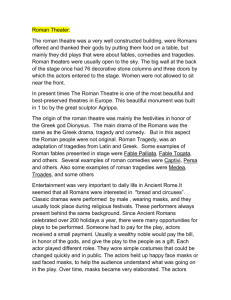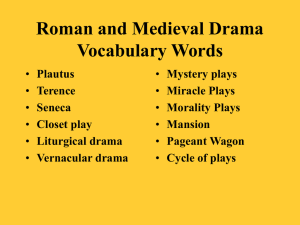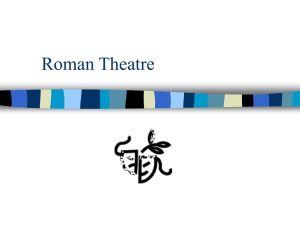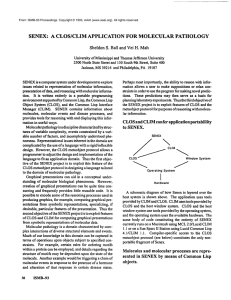Roman Playwrights Notes
advertisement
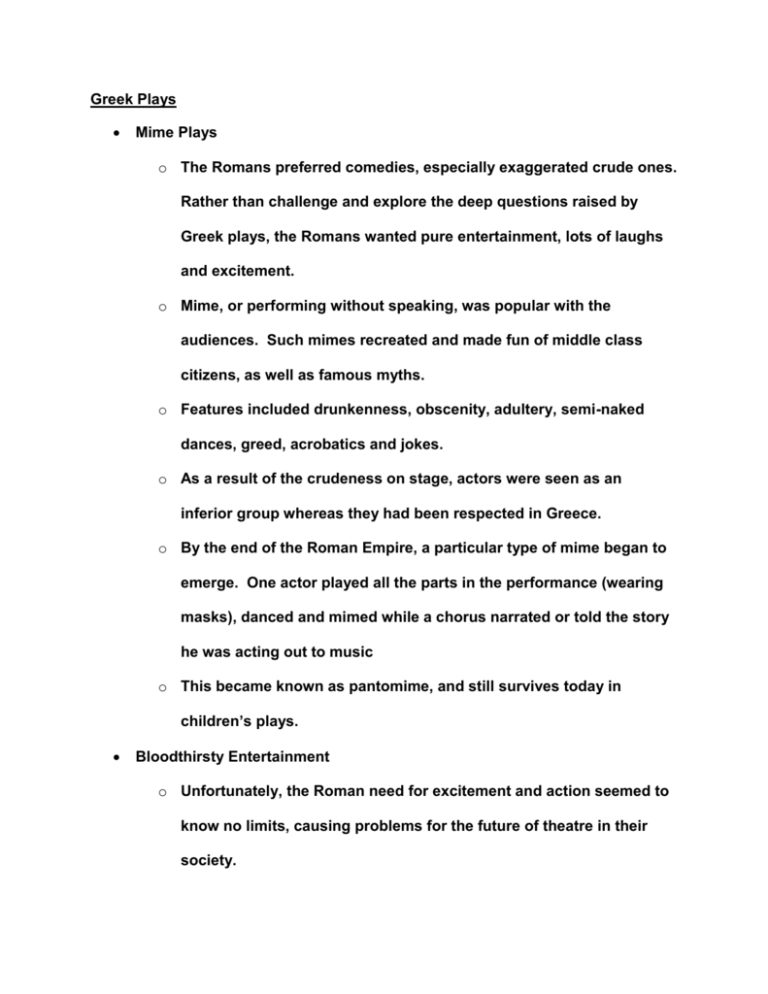
Greek Plays Mime Plays o The Romans preferred comedies, especially exaggerated crude ones. Rather than challenge and explore the deep questions raised by Greek plays, the Romans wanted pure entertainment, lots of laughs and excitement. o Mime, or performing without speaking, was popular with the audiences. Such mimes recreated and made fun of middle class citizens, as well as famous myths. o Features included drunkenness, obscenity, adultery, semi-naked dances, greed, acrobatics and jokes. o As a result of the crudeness on stage, actors were seen as an inferior group whereas they had been respected in Greece. o By the end of the Roman Empire, a particular type of mime began to emerge. One actor played all the parts in the performance (wearing masks), danced and mimed while a chorus narrated or told the story he was acting out to music o This became known as pantomime, and still survives today in children’s plays. Bloodthirsty Entertainment o Unfortunately, the Roman need for excitement and action seemed to know no limits, causing problems for the future of theatre in their society. o More and more people, especially the Christian Church began to attack the theater because of the shocking acts taking place on stage. o Obscene language and actions were applauded, real bloody violence was acceptable, criminals were killed on stage, sexual acts were performed by prostitutes, and gladiators fought to their bloody deaths. o Watching performances was like watching sport for the Roman audiences. o Other popular entertainments of the time included chariot races, horse racing, battles, acrobatics, wrestling, animal fights and fights between people and animals such as lions. o In the Colloseum amphitheater, seating fifty thousand spectators, thousands of animals were killed, and people enjoyed watching Christians being eaten by lions. Stock Characters o Stock characters were very important in Roman comedy. o A stock character is one that the audience will be familiar with and that is used in many plays. o Some examples are a braggert soldier, strong victorious soldier, and a scheming slave. o They were greatly used by Plautus. o Stock characters could sometimes even be recognized by their speeches. o The costumes they wore varied with the type of show but were used to identify the type of character. Over time these outfits became more realistic. o The standard costume base was a tunic and cloak. o At first masks were common because actors would play multiple characters and the masks made them easier to distinguish. Over time the comedic masks became grotesquely exaggerated. o The adulescens Was the hero, who is young, rich, love-struck and none too brave. He tends to ignore his fate and requires backup. Another character often has to take action on his behalf. His father is often the senex, whom he fears, but does not respect. He wears a dark wig and his clothes are usually crimson. o The senex Is the old man who has several incarnations As the father, he is either too strict or too soft; either one he does out of love for his son. As the lover he embarrasses his son, his slave, and his wife. He tends to be passionately in love with the same woman as his son, who is much too young for the senex. He never gets the girl and is often dragged off by his irate wife. Sometimes he is a friend of the family who helps the adulescens. He is often a miser, who wears a straight undergarment with long doubled sleeves. It is white and he sometimes carries a staff. o The leno runs the brothel. The love interest of the adulescens may be owned by the leno and work at his brothel so the adulescens is often forced to deal with him. He is unabashedly amoral and is only interested in money. He dresses in a tunic and mantel and is often bald with a moneybag. o The miles gloriosus Braggart soldier Is a charcter that is especially familiar today. He loves himself more than anything else and sees himself as handsome and brave, while in reality he is very stupid, cowardly, and gullible. o He may be interested in the same girl as the adulescens He wears a tunic with long sleeves and has curly hair. o The parasitus or parasite lives only for himself. He is often seen begging meals or being refused them. He lies for his own gain. He dresses in a long, black or gray garment with long, doubled sleeves. o The servi (slaves) take up about half of the rest of the cast and often have the most monologues. They are not the toilers typical of a real Roman home. The servus callidus or clever slave is always talkative, but his other traits very. Most of the time he is loyal, more so to the adulescens than the senex. He brings tricks and comedy and tends to drive the plot. He is often the one who finds the truth out at the end of the play He could be identified by his tendency to use alliteration and meter in his speech. The servi wear tunics and hold or carry scarves. o The ancilla A maid or nurse of no particular age. She is a minor character used to move the plot by presenting information or helping to develop another character. She is a tool of her mistress and may be used as a messenger. o The matron (mother), mulier (woman), or uxor (wife) I shrewd. She loves her children, but is temperamental towards her husband. She does not have to be a devoted wife, but sometimes is. She wears a long garment with flowing sleeves and a mantel. o The meretrix (prostitute) is either a mercenary or devoted. The first type is older or more experienced and has seen a lot. The second type is truly in love with the adulecens. Both are very attractive with a complex hairdo and outfit, which is yellow. She also has a mantel. o The virgo (young maiden) The love interest of the adulescens, but does not get much stage time. She is beautiful and virtuous with little personality. She is treated as a prize.



